Typhoon Hagibis: Japan deploys 110,000 rescuers after worst storm in decades
- Published
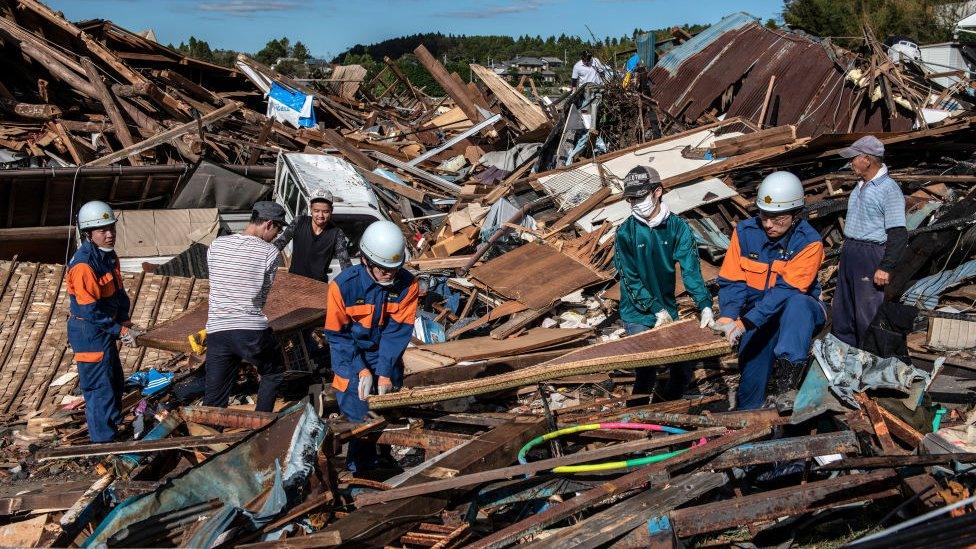
Typhoon Hagibis was the worst storm to hit the country in decades
More than 110,000 people are taking part in search and rescue operations after Typhoon Hagibis struck Japan on Saturday.
The typhoon - the worst storm to hit the country in decades - has left at least 40 dead, with 16 missing.
Typhoon Hagibis also caused the cancellation of three Rugby World Cup matches but a key match between Japan and Scotland went ahead.
Japan won 28-21 to reach the quarter-finals for the first time.
Afterwards, national team coach Jamie Joseph paid tribute to those affected.
"Everyone who is suffering with the typhoon, this game was all for you guys. The crowd was massive for us, and today was more than just a game," he said.
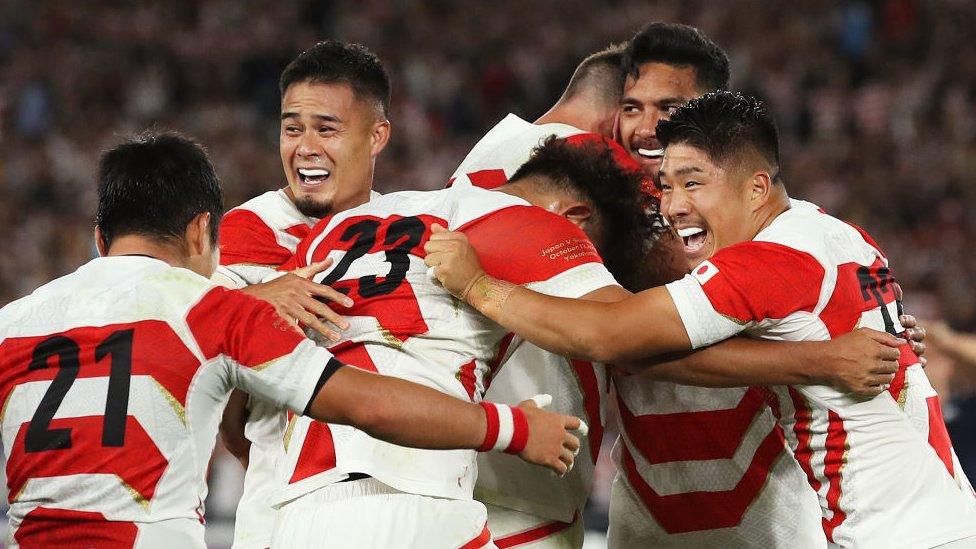
Japan reached the quarter-finals of the Rugby World Cup
The typhoon has weakened and moved away from land but has left a trail of destruction.
Thousands of police officers, firefighters, coastguards and military are working to reach those trapped by landslides and floods.
The typhoon battered eight prefectures across Japan, with wind speeds of up to 225km/h (140mph).
In the central prefecture of Nagano, group of rescuers wearing snorkels and goggles began searching for survivors in waist-high water.
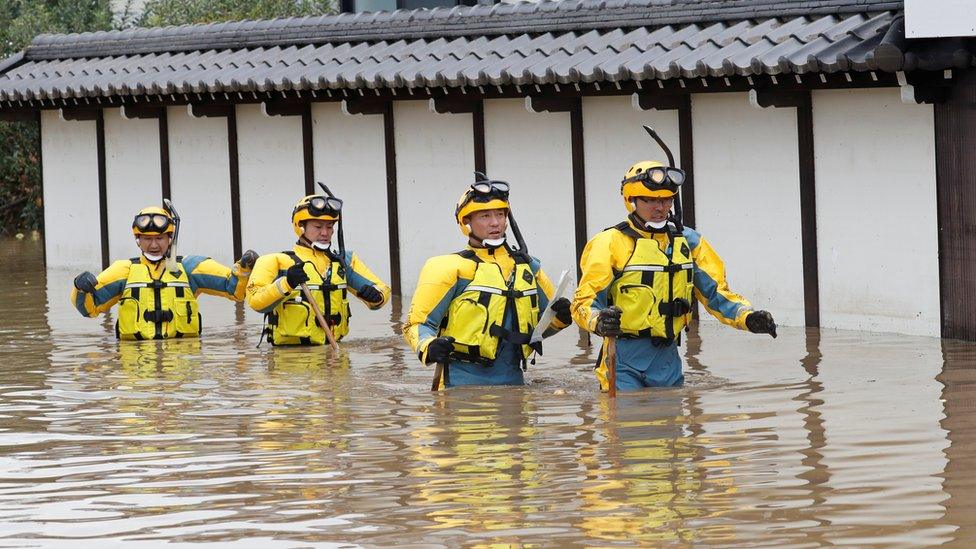
The rescuers were decked out in snorkels
A train depot in Nagano was also flooded, causing 10 high-speed ("bullet") trains to be submerged. Each train has been valued at $30m (£23m).
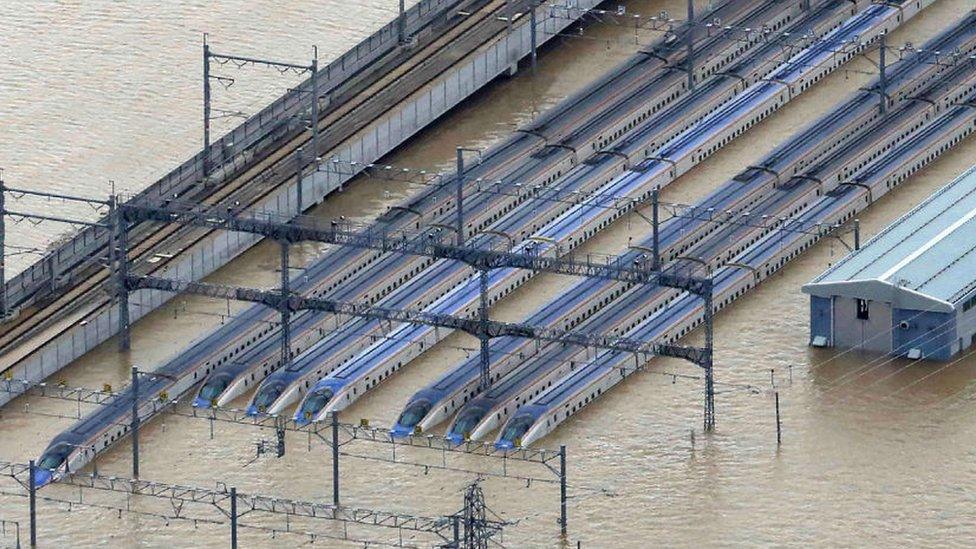
The Prime Minister's Office of Japan said the rescuers would focus on "houses isolated by floods... and search for those unaccounted for".

An extraordinary flood control system
Rupert Wingfield-Hayes, BBC Tokyo Correspondent
There are many remarkable things about what has just happened in Japan. One is that Tokyo took a direct hit from the biggest storm in half a century, and survived pretty much unscathed.
That is a testament to Tokyo's extraordinary flood control system - an elaborate underground system of pipes big enough to fit an airliner through - which cost billions of dollars to build.
The second is the extent of the destruction - stretching right across Honshu, from Mie prefecture in the west, to Iwate in the north - an area equivalent to the whole of the United Kingdom.
Flooding has been worst in Nagano prefecture, an area deep in the mountains, more used to worrying about snow.
Typhoon Hagibis was not only exceptionally large, it came very late in the season. Japan's typhoon season used to last from July to September.
But it is getting longer, and the storms are getting bigger. A study published in 2015 found that since the late 1970s typhoons hitting the coastlines of east Asia had become around 15% stronger, and the number of super typhoons had doubled.
Japan has probably the best flood defences of any country in Asia, if not the world. Tokyo's flood system is designed to withstand a once-in-a-hundred-years event.
But the rest of Japan - and other mega cities like Shanghai and Manila - are not nearly so well prepared.


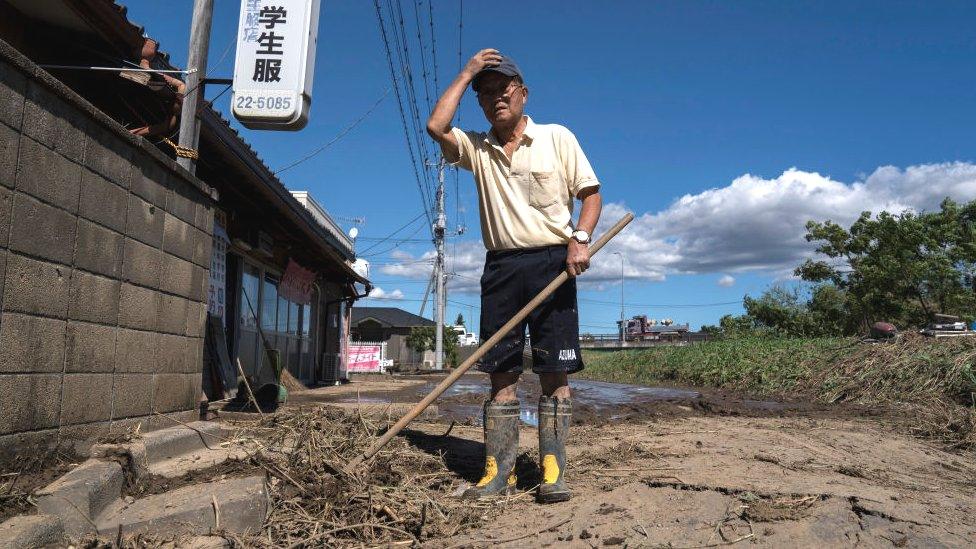
Around 92,000 households remain without power - down from 262,000 households on Sunday - with 120,000 experiencing water outages.
More than seven million people were urged to leave their homes at the peak of the storm, but it is thought only 50,000 stayed in shelters.
The capital Tokyo was left relatively unscathed but other cities and towns across the country were inundated by water.

Satellite imagery of the Hinuma river in the Ibaraki prefecture
More than 1m (3ft) of rain fell in the town of Hakone, the highest total ever recorded in Japan over 48 hours.
Troops and rescue workers are battling flooding in the wake of the deadly storm
In Nagano, levees along the Chikuma river gave way, sending flood water into residential areas.
It was only last month that Typhoon Faxai wreaked havoc on parts of Japan, damaging 30,000 homes, most of which have not yet been repaired.

- Published13 October 2019
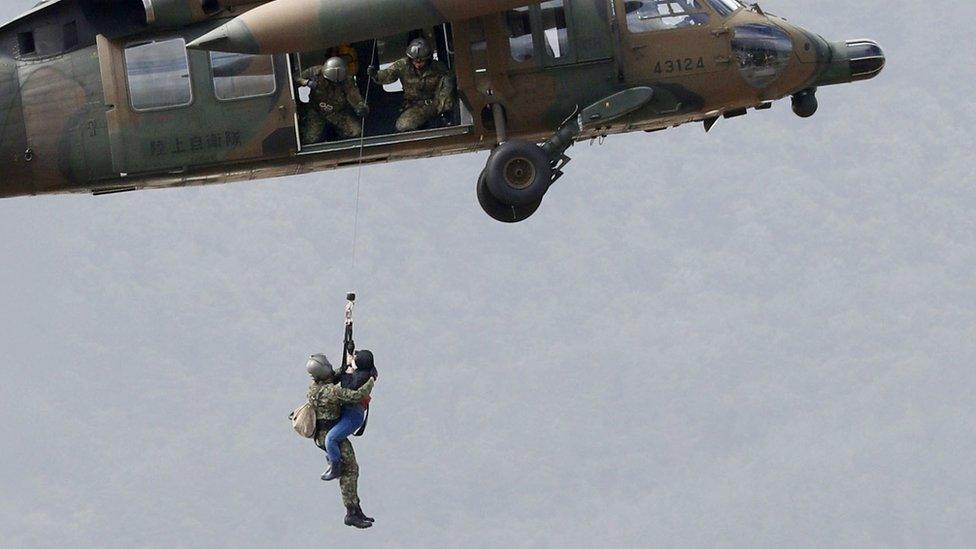
- Published13 October 2019

- Published14 September 2018
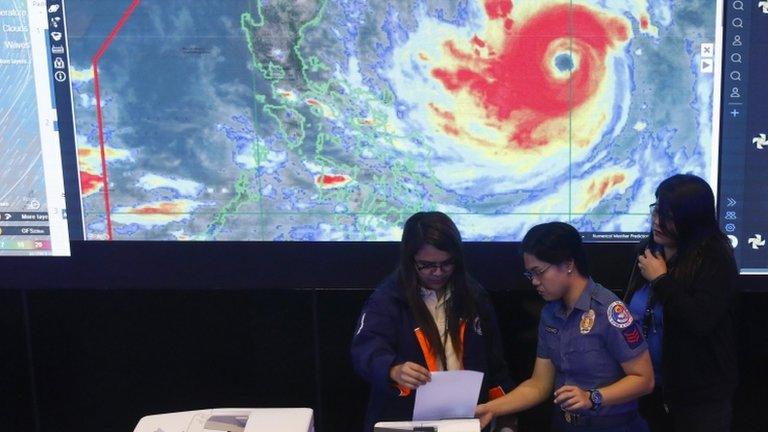
- Attribution
- Published13 October 2019
